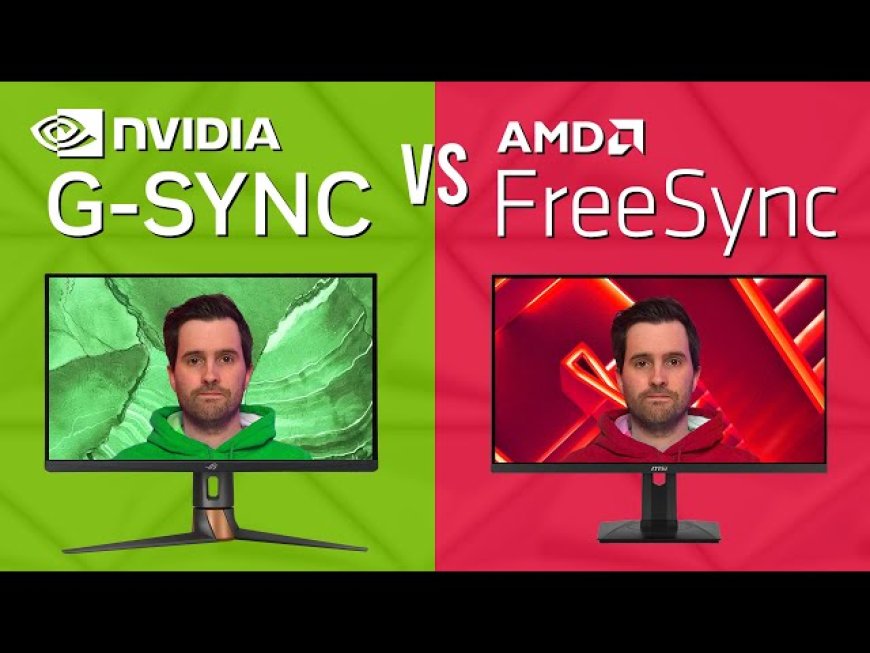Understanding Nvidia G-Sync and AMD FreeSync in 2023-2024
As we navigate the evolving landscape of gaming monitors in 2023-2024, terms like G-Sync, FreeSync, adaptive sync, and VRR (Variable Refresh Rate) are increasingly prevalent. Understanding these technologies is crucial for making an informed monitor purchase. Here, we'll delve into what these terms mean and how they impact your gaming experience.

What is Adaptive Sync?
Adaptive sync is a technology integrated into modern gaming monitors that aligns the monitor's refresh rate with the GPU's frame rendering rate. This synchronization ensures the display adapts its refresh rate according to the frames per second (FPS) output from the PC.
Also check The Steam Deck 64GB Holiday Deal
Benefits of Adaptive Sync
- Smooth Gameplay: It eliminates issues like screen tearing and stuttering.
- Enhanced Visuals: Provides a seamless visual experience by matching the game's FPS with the monitor's refresh rate.
For example, if a game runs at 126 FPS on a 144Hz monitor with adaptive sync, the monitor adjusts to 126Hz to match the game's FPS, ensuring a smoother gaming experience.
Nvidia G-Sync vs. AMD FreeSync
In the debate between Nvidia G-Sync and AMD FreeSync, understanding their differences and compatibility is crucial for gamers.
Nvidia G-Sync
- Technology: Proprietary adaptive sync technology developed by Nvidia.
- Compatibility: Works primarily with Nvidia GPUs.
- Performance: Known for providing a slightly superior, stutter-free gaming experience.
- Cost: Typically found in higher-end monitors, making them more expensive.
AMD FreeSync
- Technology: AMD’s adaptive sync solution, based on the VESA Adaptive-Sync standard.
- Compatibility: Primarily supports AMD GPUs but is also compatible with some Nvidia GPUs.
- Performance: Offers a similar experience to G-Sync, though some users report minor differences in smoothness.
- Cost: Generally more affordable than G-Sync monitors.
Cross-Compatibility
As of 2023-2024, the compatibility between these technologies has improved. Some Nvidia GPUs can now use FreeSync monitors, albeit with potential limitations compared to native G-Sync monitors.
Choosing Between G-Sync and FreeSync
When selecting a monitor, consider the following factors:
- GPU Compatibility: Ensure your GPU is compatible with the monitor’s adaptive sync technology.
- Budget: FreeSync monitors tend to be more budget-friendly.
- Performance Needs: If you demand the highest level of smoothness and have an Nvidia GPU, G-Sync might be the better choice.
Conclusion: Finding the Right Match for Your Setup
In the current market of 2023-2024, both Nvidia G-Sync and AMD FreeSync offer compelling benefits for gamers. Your choice will largely depend on your existing GPU, budget, and performance expectations. Understanding the nuances of each technology will help you make an informed decision that enhances your gaming experience. Remember, the monitor market continues to evolve, so keeping abreast of the latest developments is essential for future purchases.


































